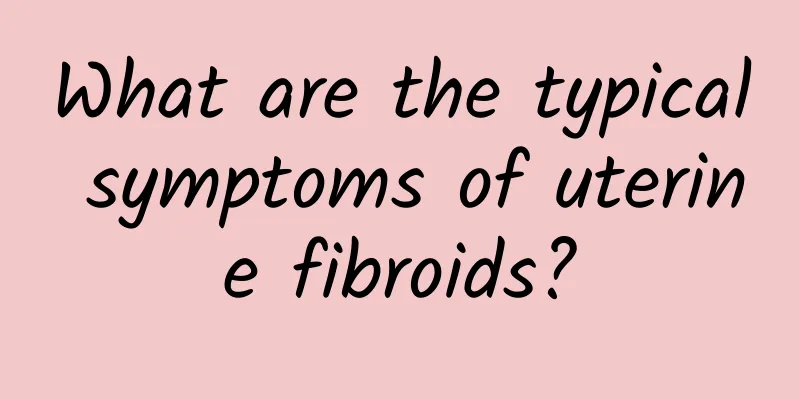How to perform surgery for uterine fibroids? There are two situations

|
If a patient with uterine fibroids undergoes hysteroscopic surgery, general anesthesia is required first. After anesthesia, the cervix is dilated and the hysteroscope is inserted. With the help of the hysteroscope, the fibroid tissue is removed and taken out. Uterine fibroids can also be treated with laparotomy, which requires a detailed examination and anesthesia before surgery, followed by laparotomy to remove the tumor, and finally postoperative care. Many women usually do not pay attention to the maintenance of the uterus, which easily increases the incidence of uterine fibroids. However, the severity of the disease varies from patient to patient. If the tumor is relatively small, surgical treatment is usually not required. But if the tumor is large and causes obvious clinical symptoms, surgical treatment must be performed in time. So how to perform surgery for uterine fibroids? |
<<: Which part of the body is more effective for moxibustion of uterine fibroids?
>>: What are the effects of uterine fibroids on menstruation?
Recommend
How to prevent cervical warts correctly
Cervical condyloma acuminatum is caused by human ...
What kind of compress can be used for Bartholinitis?
What kind of ointment can be used for Bartholinit...
Will medical abortion affect pregnancy? What are the precautions for medical abortion?
If a woman does not want the child after an unexp...
What is the difference between curettage and abortion?
Curettage and abortion are two different medical ...
Best hospital for the treatment of pelvic peritonitis
Pelvic peritonitis brings a lot of trouble and di...
Causes of bacterial vaginosis
It is necessary for us to understand the causes o...
Women should know the symptoms of irregular menstruation
Women often experience irregular menstruation dur...
What should I do if I have pelvic inflammatory disease? Remember not to blindly take medicine
After suffering from pelvic inflammatory disease,...
Hyperprolactinemia Medication Guide
How to use drugs to treat hyperprolactinemia? Hyp...
American Ginseng, Not Too Hot, Fang Demonstrates Creative Cooking
As summer approaches, many people often go in and...
What are the symptoms of ectopic pregnancy?
Ectopic ovarian pregnancy is a serious gynecologi...
Clenbuterol enters the country! Hu Zhiqiang: Strict control and zero detection
Taichung Mayor Hu Chih-chiang emphasized at a mun...
Why do unmarried women suffer from adnexitis?
Why do unmarried women suffer from adnexitis? Man...
Fitness doesn't work but hurts your body! Get rid of the 5NG sports concept
In pursuit of health, exercise is one of the meth...
Why are my legs so thick? 3 major physical conditions to pay attention to
When it comes to beautiful legs, there is no woma...









